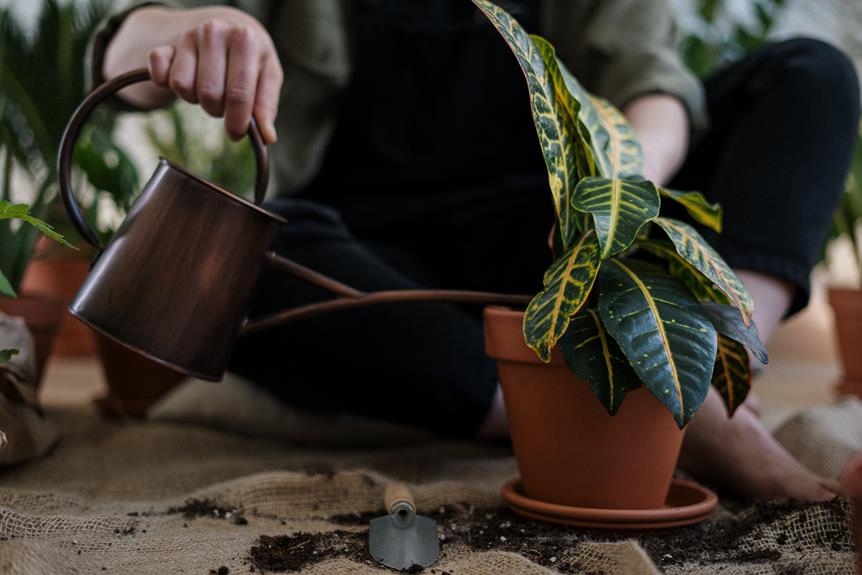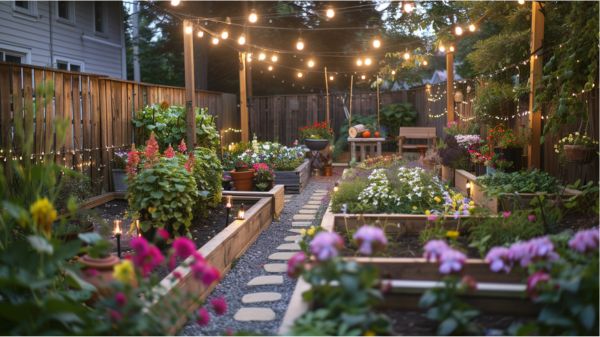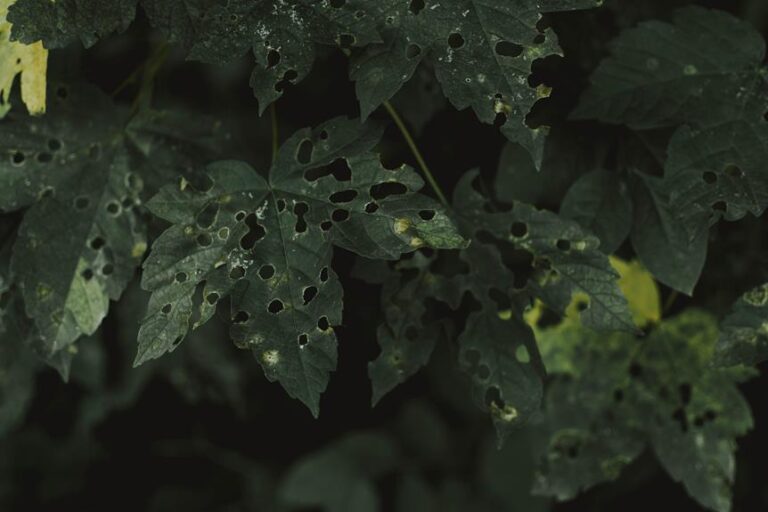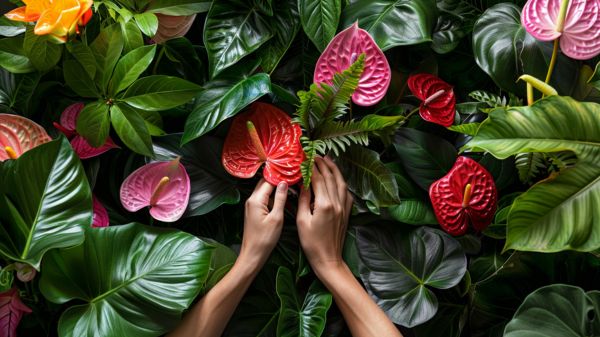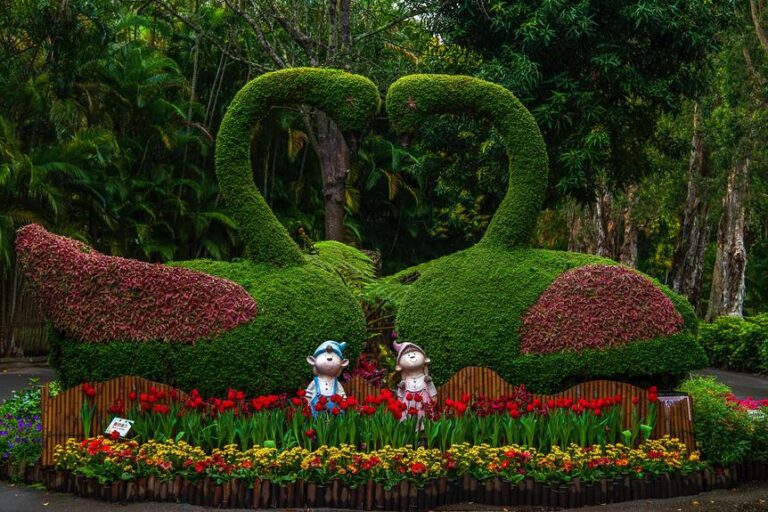What Is the Optimal Lighting for Indoor Herb Gardens?
Have you ever wondered what the optimal lighting is for indoor herb gardens? Well, we’re here to shed some light on the subject!
When it comes to growing herbs indoors, the right lighting is crucial for their health and growth. In this article, we will explore the different types of lighting that are suitable for your herb garden and delve into the importance of light intensity, duration of exposure, and the right light spectrum.
We’ll also touch upon temperature considerations to ensure your herbs thrive in their indoor environment.
So, if you’re ready to create the perfect ambiance for your herb garden, let’s dive in and discover the optimal lighting for indoor herb gardens!
Types of Lighting for Indoor Herb Gardens
We prefer using LED grow lights for our indoor herb gardens.
LED lights have proven to be more effective than fluorescent lights when it comes to promoting healthy plant growth. LED lights emit specific wavelengths of light that are essential for photosynthesis, while fluorescent lights produce a broader spectrum of light that may not meet the needs of all plants.
Additionally, LED lights are more energy-efficient and have a longer lifespan compared to fluorescent lights.
When it comes to natural versus artificial lighting, LED lights are designed to mimic natural sunlight, providing plants with the optimal light intensity and spectrum they require for optimal growth.
This makes LED lights a reliable choice for indoor herb gardens, ensuring that your plants thrive and flourish.
Importance of Light Intensity for Herb Growth
To ensure the optimal growth of herbs in indoor gardens, it’s crucial to pay attention to the intensity of light they receive. Light intensity plays a vital role in maximizing herb growth, and here are some key benefits:
- Enhanced photosynthesis: Adequate light intensity provides the energy needed for photosynthesis, the process by which plants convert light into energy and produce oxygen.
- Increased nutrient absorption: Light intensity affects a plant’s ability to absorb nutrients from the soil. Higher light intensity encourages better nutrient uptake, resulting in healthier and more productive herbs.
- Stronger stems and leaves: Sufficient light intensity promotes sturdy stems and lush foliage, making plants more resistant to diseases and pests.
- Faster growth: Optimal light intensity allows herbs to grow at their full potential, leading to faster growth and higher yields.
- Improved flavor and aroma: Herbs grown under proper light intensity tend to have more intense flavors and aromas, enhancing the culinary experience.
Duration of Light Exposure for Healthy Herbs
Maximizing the health of herbs in indoor gardens involves carefully considering the duration of light exposure. The duration of light exposure directly affects herb growth and overall plant health.
Herbs require a specific amount of light to thrive, and understanding the optimal duration is crucial for successful cultivation. Generally, most herbs require around 12-16 hours of light exposure per day. This duration allows for sufficient photosynthesis and promotes healthy growth.
However, it’s important to note that different herbs have varying light requirements, so it’s essential to research the specific needs of each herb in your garden. Providing the right amount of light exposure duration will ensure the optimal conditions for your herbs, leading to healthy and vibrant plants.
Choosing the Right Light Spectrum for Herbs
To optimize the growth of indoor herbs, it’s crucial to consider the right light spectrum for healthy plant development. Here are some key factors to keep in mind when choosing the right light spectrum for your herb garden:
- Lighting Efficiency: Look for lights that are energy-efficient and provide maximum output for the amount of energy consumed. LED grow lights are a popular choice due to their high efficiency and long lifespan.
- Lighting Schedule: Determine the specific lighting requirements for each stage of your herb’s growth. Different herbs may require different light intensities and durations at various stages such as germination, vegetative growth, and flowering.
- Red and Blue Spectrum: Herbs primarily require light in the red and blue spectrum for optimal growth. Red light promotes flowering and fruiting, while blue light encourages leafy growth.
- Full Spectrum Lights: Consider using full spectrum lights that mimic natural sunlight. These lights provide a balanced combination of red, blue, and other wavelengths necessary for healthy herb development.
- Adjustability: Choose lights that allow you to adjust the spectrum and intensity. This flexibility ensures that you can provide the specific light conditions required by different herbs at different growth stages.
Temperature Considerations for Indoor Herb Lighting
For temperature considerations in indoor herb lighting, we prioritize maintaining an optimal environment for plant growth. Temperature control is crucial in ensuring that herbs thrive indoors.
Managing heat is essential because high temperatures can lead to wilting, leaf burn, and even plant death. It’s important to keep the temperature within a suitable range for herbs, typically between 60°F and 70°F (15°C to 21°C).
To achieve this, it’s recommended to place the herb garden away from heat sources such as radiators or direct sunlight. Additionally, using a fan or ventilation system can help circulate air and prevent heat buildup.
Monitoring the temperature regularly and making adjustments as needed will create a favorable environment for indoor herb growth.
Conclusion
In conclusion, finding the optimal lighting for indoor herb gardens is crucial for successful herb growth.
By considering the types of lighting, light intensity, duration of exposure, light spectrum, and temperature, you can create the perfect environment for your herbs to thrive.
Remember, just as the right light brings out the best in a painting, the right lighting will bring out the full potential of your indoor herb garden.
